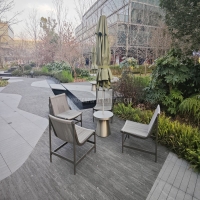Welcome to the website for landscape facilities products and knowledge.
How do manufacturers balance the demand for minimalist designs with the need for functional features?
In today's competitive market, manufacturers face the challenge of meeting consumer demand for sleek, minimalist designs while ensuring their products remain highly functional. Striking this balance requires a thoughtful approach to design, engineering, and user experience.
Minimalist designs prioritize simplicity, clean lines, and uncluttered aesthetics, often appealing to modern consumers who value elegance and efficiency. However, functionality cannot be sacrificed. Manufacturers achieve this equilibrium by integrating hidden or multifunctional features, such as foldable components, modular attachments, or smart technology that operates seamlessly within the design.
Material selection also plays a critical role. Lightweight, durable materials can maintain a minimalist look while supporting robust functionality. For example, aluminum or carbon fiber is often used in electronics and furniture to combine strength with a sleek appearance.
User-centered design is another key factor. By conducting thorough research on consumer needs, manufacturers can identify which features are essential and which can be streamlined. This ensures that the final product is both visually appealing and practical.
Ultimately, the balance between minimalism and functionality is achieved through innovation, careful planning, and a deep understanding of user preferences. The result? Products that are as beautiful as they are useful.
Related search:

Recommendation
Metal structure rattan chair without armrests for single person, with woven seat and backrest.